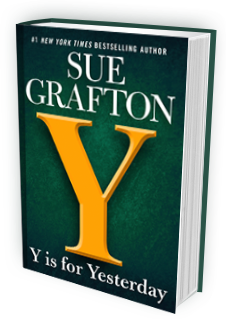Interview
A Conversation with Sue Grafton
1996
Q. Your character Kinsey Millhone is beloved by men and women of all ages. Why do you think she is so appealing?
A. A lot of P.I.s in books have these big fancy law degrees. Kinsey doesn't even have an AA degree. She's smart as a whip, but she never liked school. She's blue collar, a working woman, plain and simple, and she manages to support herself very nicely, which is why, at the end of a book, I often include the amount she's been paid for a case. She always keeps her medical insurance up. She pays her bills on time. She's sloppy about her tax receipts, but which of us isn't? Readers are convinced she's real. I don't idolize her; she isn't larger than life; she's human-sized. She makes mistakes. In "G" IS FOR GUMSHOE she has a hot romance with this guy named Robert Dietz who is coming back in "M"...though I don't think she knows that yet.
Q. You have said that "Kinsey is how I might have been had I not married young and had children." What fantasies does Kinsey enable you to live out?
A. I think that Kinsey represents the "heroic," an aspect of my nature which seldom gets called upon in the course of my ordinary life. As a writer, I sit all day, working at a word processor, reading books on auto theft, or doing telephone research. Through Kinsey, I get to track down the bad guys, pursue the villains and be pursued by them in return. I get to engage in fisticuffs sometimes. For instance, both in "B" IS FOR BURGLAR and "F" IS FOR FUGITIVE, Kinsey gets involved in a physical battle, which is something I'd never do. It felt good and I enjoyed it...plus, I came away from the fight without a mark on me. Through Kinsey, I get to test my ingenuity and my skills with imaginary firearms...all without leaving the safety of my office chair.
Q. In "L" IS FOR LAWLESS Kinsey is faced with the dilemma of whether to begin a relationship with relatives with whom she has had no strong connection over the years. What interested you about adding this new element to her life?
A. With regard to Kinsey's "new-found" relatives, I don't think complex emotional family issues can be neatly wrapped up at the end of a book. At this point, I'm not at all sure what she'll do with them. She herself may not know until "O" or "P." What interests me is the effect of reality on the family myth and the effect of family myth on reality. Our family histories are like fairy tales we're told from a very early age. In the tale, we're cast as hero or victim, as the infant rescued or abandoned, discounted or deified. From this we form an image of ourselves and our relationship to the world. Often it's a story we act out over and over again, trying to make the ending come out right instead of the way it did. Kinsey always seen herself as an orphan and a loner. Now she has to incorporate a whole new set of facts and a whole new cast of characters into her singular life.
Q. What was the inspiration for the alphabet series?
A. I was always fascinated by mysteries that had linking or related titles. I knew about John D. MacDonald whose titles were connected through color and Harry Kemelman who joined his titles by the days of the week. One day I was reading The Gashlycrumb Tinies, a book of cartoons by Edward Gorey, which is a series of pen and ink drawings of little Victorian children "done in" by various means..."A is for Amy who fell down the stairs...B is for Basil assaulted by Bears...C is for Clara who wasted away," etc...A cartoon light bulb formed above my head and I thought to myself, "Gee, why couldn't you do a series of novels based on the alphabet?" At that point, I sat down and made an alphabetical list of all the crime related words I could think of. So here I am now, nearly half-way through, probably tied up until the year 2015 or SO.
Q. How do you decide on each title?
A. Some of the titles, I've known since the beginning—"A" IS FOR ALIBI, "B" IS FOR BURGLAR, "C" IS FOR CORPSE. Originally, I thought "F" was for FORGERY, but when I started work on the book, I found the subject didn't interest me that much. When I came up with the title FUGITIVE, I suddenly had a sense of how the story would lay out. Then, too, I thought at first that "K" was for KIDNAP, but when I began to fashion the storyline, I realized that kidnapping is a federal offense and that a self-employed private investigator, like Kinsey Millhone, would never become involved in such a case. I couldn't make the story work because I didn't believe in it myself. Once I switched to "KILLER," I found it easier.
Q. You are one of the few authors who has, consistently refused to sell the film rights of your books to Hollywood. Why?
A. The film and television rights actually reside with me and I'm adamant about not surrendering control of Kinsey's character or the books. I used to picture Debra Winger in the role, but I'm afraid the casting is the least of my worries. The truth is, I don't want an actress's face superimposed on Kinsey's. Most of her fans have a very clear sense of what she looks like so the minute an actress steps into the role, fifty percent of my readers would be up in arms, claiming she was wrong for the part. And they'd be right. Readers are perfect casting directors. Books are like movies of the mind and it's better to leave Kinsey where she is. Hollywood can't believe writers aren't panting for the money and the recognition—the glamour of film—but I wrote in Hollywood for fifteen years and believe me, I'm cured. I know how the game is played and it's not one I admire. Because of Kinsey, I can afford to have integrity.
Q. What are a few of the projects you worked on in Hollywood and what was it about the industry that you disliked so much?
A. Actually, I worked on a couple of projects I love...LOVE ON THE RUN with Alec Baldwin and Stephanie Zimbalist and an Agatha Christie adaptation of CARIBBEAN MYSTERY with Helen Hayes playing Miss Marple. What I object to in Hollywood is the "group think" method of writing, where six or eight non-writers sit around in a room and "help" a writer work. Out there, writers are paid a lot, but you have no power and you're accorded no real respect. You're treated like a clerk whose job it is to type up everybody else's notes. On the plus side, I have to admit that I learned a lot. I learned how to structure a story, how to write dialogue, and how to craft an action sequence. My primary lesson, however, was that I'm a solo writer, happiest when I'm making all the executive decisions. I've always been willing to rise or fall on my own merits. After my years in Hollywood, I got tired of apologizing for work that really wasn't mine to begin with.
Q. Have you ever used any suggestions by fans regarding plot or character development?
A. People worry about Kinsey. Since I started this series, I've received literally hundreds of letters and everyone expresses a different opinion. Some people feel that she should marry. Some readers want her to get a cat. Some want her to have more sex, and others are happiest when there's no sex at all. Some worry about her getting beat up, that she eats too much junk food, that she has no friends ... and on it goes. If I followed every suggestion, Kinsey would end up with no character at all. She'd be some sort of fictitious, generic human being that none of us could relate to. My object in the writing is to tune out the world's "noise" and listen more attentively to the voice in my heart. The truth is, I could no more dictate her nature than she could dictate mine. Kinsey's happy as she is and she doesn't need to be rescued, improved, or saved.
Q. How has Kinsey changed from "A" to "L"? What have you learned about yourself or your writing through the series?
A. I'm not sure Kinsey has changed in these first twelve books. I think the reader learns more about her, but from Kinsey's perspective, only three years have passed while the rest of us have been getting older at a much faster clip. She's given up her relationship with a "sometimes" married man. Her haircut has improved and she now prefers wine with a cork instead of the stuff with a screwtop lid. Aside from that, she still eats peanut-butter-and-pickle sandwiches, she still gets up at six to jog, and she still picks at the knot of a case until it comes unraveled. Most of what I've learned about myself is to say "No" to everything that doesn't pertain to the work itself. I focus on the writing and let the rest of the process take care of itself. I've learned to trust my own instincts and I've also learned to take risks. I don't want to write formula. I don't want to crank these books out like sausages. Every book is different, which takes a hell of a lot of ingenuity on my part.
Q. Now that you've become an expert on the dark side of human nature, does your current husband sleep well at night?
A. When I was writing "I" IS FOR INNOCENT, I came up with the idea of having someone shot through a door's security fish eye. When the idea came into my head, I went straight down to my own front door and made sure the device could be unscrewed from the outside. The house was built in 1935 and the fish eye consists of two cartridges, one of which screws into the other. It's perfectly possible to do this standing on the front porch, which is how the killer managed to lure his victim to her death. As it happened, while I was in the process of unscrewing the cartridge, my husband walked by and asked what I was doing. I said, "Oh nothing. Just trying to figure out if you could fire a pistol through this hole and shoot somebody's eye out." He was really sweet to me for about a week after that. He'll pass my office and say, "Whatcha reading?" and I'll call out "Mushroom poisoning." He hardly eats some nights.


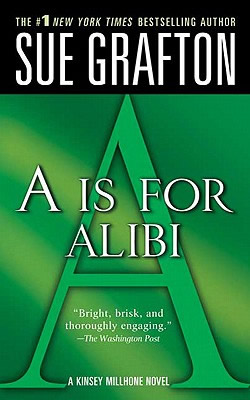 A is for Alibi
A is for Alibi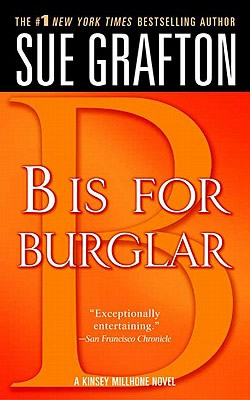 B is for Burglar
B is for Burglar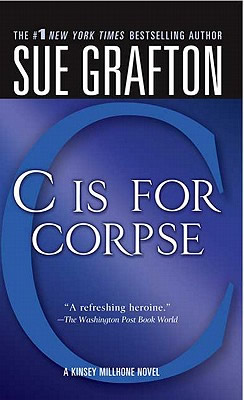 C is for Corpse
C is for Corpse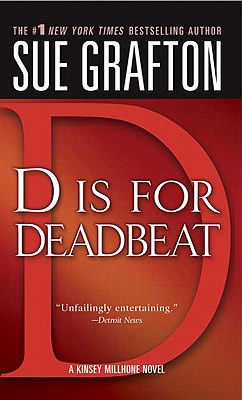 D is for Deadbeat
D is for Deadbeat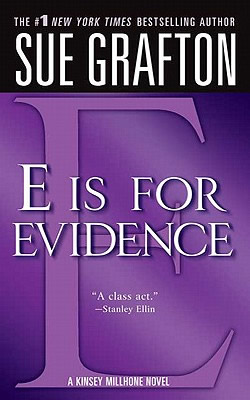 E is for Evidence
E is for Evidence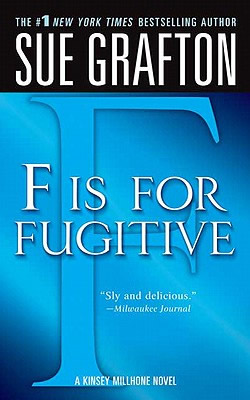 F is for Fugitive
F is for Fugitive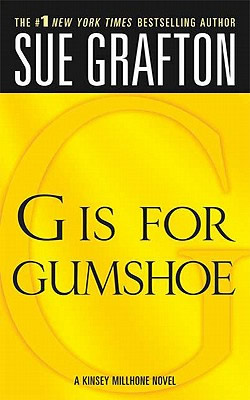 G is for Gumshoe
G is for Gumshoe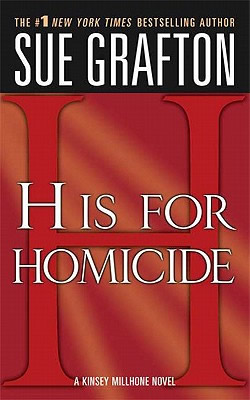 H is for Homicide
H is for Homicide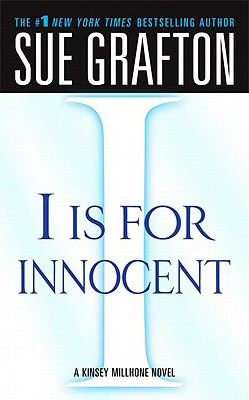 I is for Innocent
I is for Innocent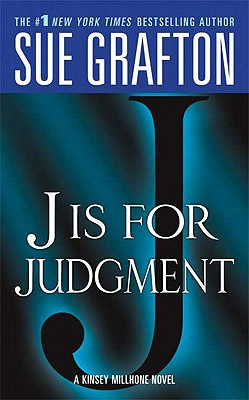 J is for Judgment
J is for Judgment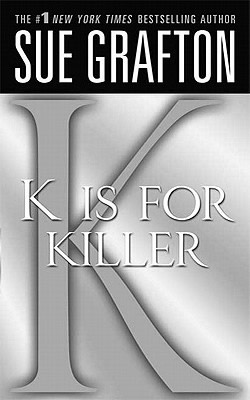 K is for Killer
K is for Killer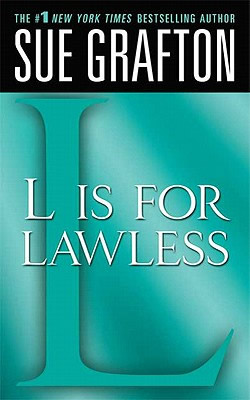 L is for Lawless
L is for Lawless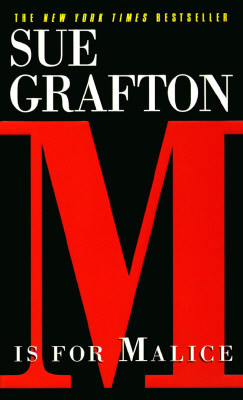 M is for Malice
M is for Malice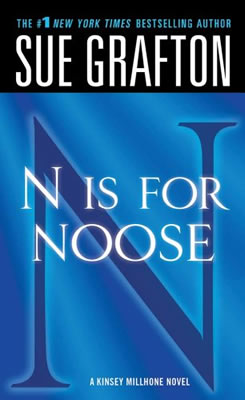 N is for Noose
N is for Noose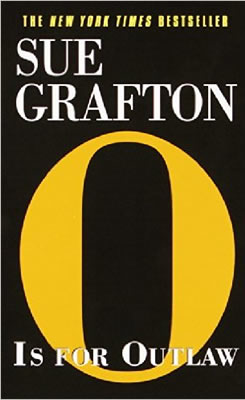 O is for Outlaw
O is for Outlaw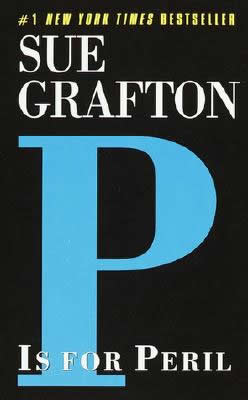 P is for Peril
P is for Peril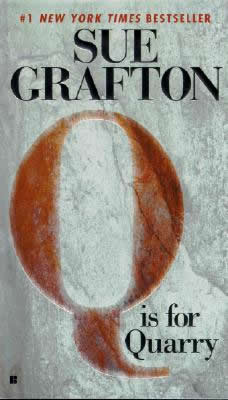 Q is for Quarry
Q is for Quarry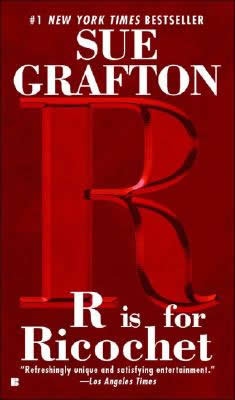 R is for Ricochet
R is for Ricochet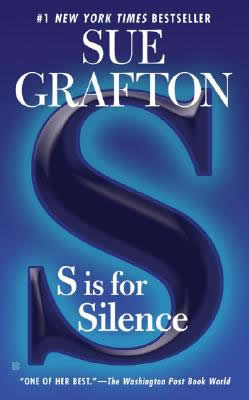 S is for Silence
S is for Silence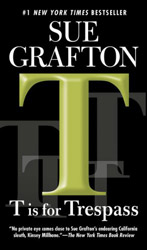 T is for Trespass
T is for Trespass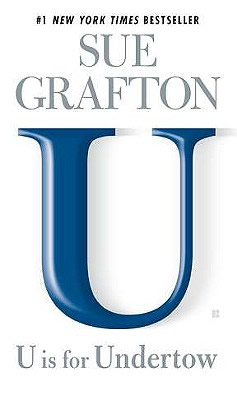 U is for Undertow
U is for Undertow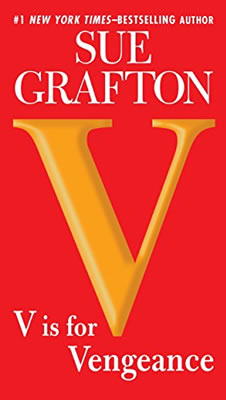 V is for Vengeance
V is for Vengeance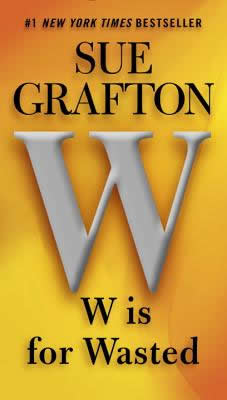 W is for Wasted
W is for Wasted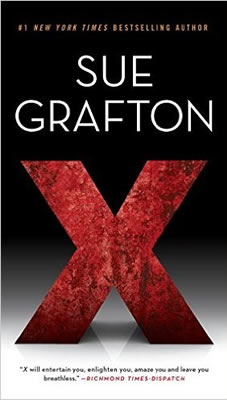 X
X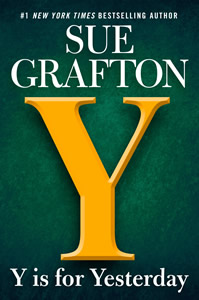 Y is for Yesterday
Y is for Yesterday